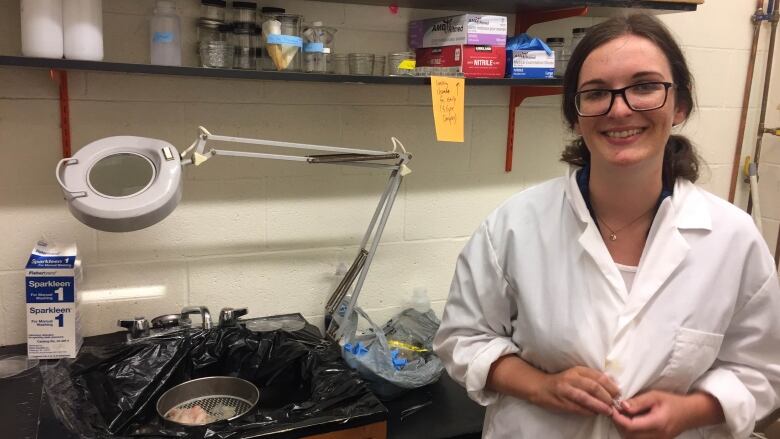A story with guts: What this fisheries lab is learning about the state of the oceans
Memorial University researcher monitoring plastic in the ocean

It's the kind ofjob that stands out even in the esoteric world of scientificresearch.
Graduate studentJessica Melvin spends much of her timein a tiny room with no windows,picking through plastic bags filled with cod guts.
And on a sultry day in late July,that's exactlyhow it smells.
"You get used to it. Once you've been in here for about an hour, it goes away," she told the St. John's Morning Show.
"I just have to remember to shower when I go home."
It's just part of the job as Melvin and fellow researchers study how much plastic is in the ocean off the coast of Newfoundland and Labrador.
This is the second year Memorial University's Civic Laboratory for Environmental Action Research has collected offal from people taking part in therecreational fishery.
Recreational fishery key to research
Last weekend they left the slipway at Quidi Vidi with 13 samples. On July 30 they'll be at the wharf in St. Philip's. By the end of the summer they'll havecollectedcod guts fromall over the Avalon Peninsula, plus Marystown.
"One of the great things about working with citizens is that we're getting guts from fish that people are actually eating," she said.

On the day CBC visited her space in the science building Melvin was working on her third package of shiny pink organs. She slicedopen the stomach, then the intestines, and dumpedthe contents into a strainer. Not pleasant to look at, but that doesn't matter. Sense of touch is what it's all about.
"It's quite slimy," she said. "And there is a lot of intestines so you do have to really work to get the scissors through the whole thing."
So far this year Melvin's probing fingers haven't found any plastic. Cod can ingest bits of the synthetic material directly from the water, or through the smaller fish they eat. When plastics are present they can indicate bigger problems.
"They have the potential to carry a lot of chemicals," Melvin said, chemicals that can become more concentrated as they move up the food chain. "We want to see how big a problem that is in Newfoundland waters."
Encouraging results so far
The good news is, so farresearchers haven't foundmuch. Of the 204 fish they examined last year they found plastics in five.
At just 2.4 per cent, Melvin saidthat'sone of the lowest rates among cod tested anywhere in the world. This year they hope to double the sample size andthey're looking for your help.
The researchers are asking anyone who catches cod in the recreational fisheryto save and freeze the guts, label the bags and give Melvin a call.
"I would love to drive around and pick up guts wherever people want me to," she said.
You'll find detailed information onhow you can help atthe laboratory website.
With files from Andrew Sampson and the St. John's Morning Show












_(720p).jpg)


 OFFICIAL HD MUSIC VIDEO.jpg)
.jpg)



























































































